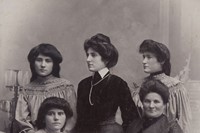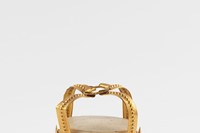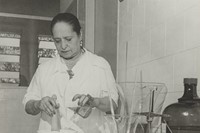“There are no ugly women, just lazy ones”: Helena Rubinstein revolutionised beauty as we know it
Who? Cocteau called her “the woman who invented beauty”; everyone else called her ‘Madame’. Born the eldest of eight sisters in a poor quarter of Krakow in 1872, Helena Rubinstein would go on to become one of the formative figures of the beauty world as we know it today.
Science played a key part in her success, but it was her vibrant creativity that distinguished her face creams and rouges from those of her rivals. While her husband, Edward Titus, published Lady Chatterley’s Lover at Black Manikin Press, she lunched with Gabrielle Chanel, sat for sketches by Picasso, and discussed art with Jacob Epstein, living a life as rich as her miraculous concoctions. Dalí designed her a powder compact, and Colette wrote her advertisements: how could anybody else compete?
What? At the age of 24, Rubinstein moved to Australia, armed with 12 pots of face cream from her mother. Realising their potential to ease sunburn, she began working with an apothecary, producing a cream which she called Valaze (‘gift from heaven’ in Hungarian), disguising the smell of the lanolin from her uncle’s sheep with lavender and lilies. She was soon producing several pots a day, along with beauty tips we now consider commonplace: plenty of water and plenty of sleep.
Success followed success and in 1902 she opened her own salon in Melbourne. The same year saw Australian women become the first in the world to earn the right to vote. “Work helps to keep a woman young,” Rubinstein famously declared. “It keeps the wrinkles out of the mind and spirit.” At a time when a woman’s position in the workplace was still fraught with issues, she defied expectations and forged her own path. From Australia she soon expanded and set up shop in Paris, her “laboratory of beauty”, where she furthered her studies into dermatology. By 1912 she had invented the first system dedicated to the differentiation of skin types. As her beauty empire grew she provided the means, job opportunities, and educational facilities at her salons (and later beauty school) for other women to succeed alongside her.
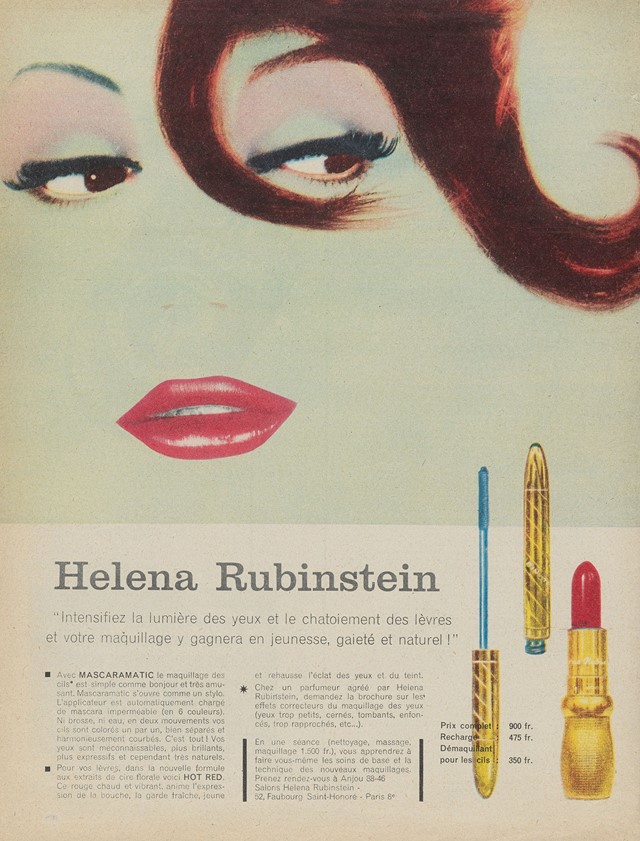
Now an exhibition in Vienna celebrates the late pioneer of beauty and traces her incredible journey from migrant to millionaire. Back in 1932 it was in this city that Rubinstein took on the production of the waterproof mascara, invented by the Viennese singer Helene Winterstein-Kambersky. Never afraid to make a splash, she debuted the unique new product during a synchronised swimming ballet at the 1939 New York World’s Fair. Later, in 1958, she revolutionised it even further, breaking free from the ubiquitous compacts and jars by pioneering the first ever mascara wand with a daringly modern metallic tube. In short, she changed the beauty world forever.

Why? In a world where attitudes towards make-up and skincare regimes continue to stir division (to 10-step or not?) it’s refreshing to be reminded that the billion-pound industry that dominates today was founded on principles of love. Although she could be curt at times – she dismissed Proust because he “smelt of mothballs”; declared “there are no ugly women, just lazy ones”; and her rivalry with Elizabeth Arden was so legendary it’s even been made the subject of a Broadway show – Rubinstein sought to “teach moderation” with make-up, and educate when it came to health and skincare. She saw the products of her trade as, poignantly, “spectacular mask[s] whose only aim is love”.
For Rubinstein, individualism was the key ingredient to beauty. “I have always had a weakness for the unusual,” she confessed. As a self-made business woman herself, she wished to grant women the power to celebrate their looks as they might celebrate great art: “For me,” she declared “it is just as important to help a human being become beautiful as it is to sculpt a great statue or paint a fine portrait. Works of art do not cross paths in the street every day, they don’t sit at the table opposite you.”
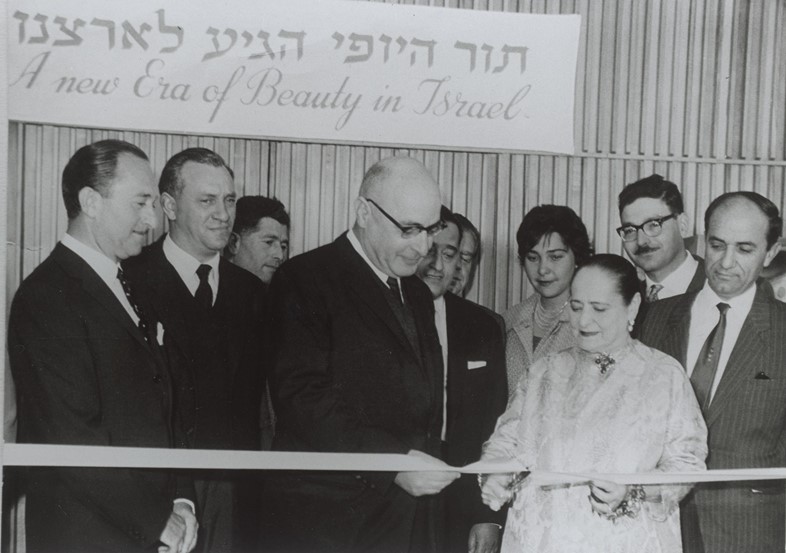
Helena Rubinstein: Pioneer of Beauty runs until May 6, 2018 at the Museum Judenplatz, Vienna.

